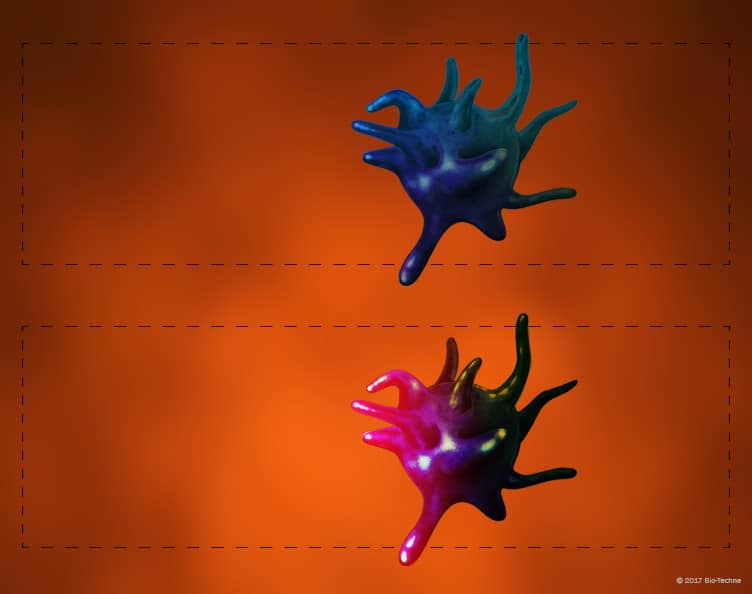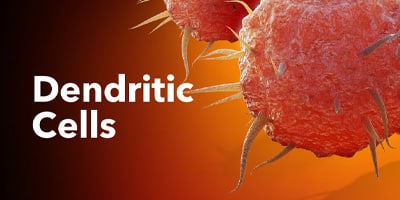Human Blood/Secondary Lymphoid Organ/Non-Lymphoid Tissue Parenchyma Classical Dendritic Cell Subset Markers
Click on one of the dendritic cell types shown in the buttons below to see the markers that are commonly used to identify the different dendritic cell subsets.

Overview
Two subsets of blood, secondary lymphoid organ, non-lymphoid tissue parenchyma classical dendritic cell (cDC) subsets have been identified in humans, which are known as CD1c/BDCA-1+ cDCs and CD141/BDCA-3/Thrombomodulin+ cDCs. CD1c/BDCA-1+ cDCs are the most prominent subset found in human blood, while CD141/BDCA-3/Thrombomodulin+ cDCs represent a very small population. Phenotypically, these two subsets differ not only in the high level expression of either CD1c/BDCA-1 or CD141/BDCA-3/Thrombomodulin, but CD1c/BDCA-1+ cDCs also uniquely express SIRP alpha/CD172a and the chemokine receptor, CX3CR1. In contrast, CD141/BDCA-3/Thrombomodulin+ cDCs uniquely express CLEC9a, IGSF4A/SynCAM1/Necl2, DEC-205/CD205, and the chemokine receptor, XCR1. Both subsets express low levels of CD11b/Integrin alpha M, and lack expression of CD1a and the lineage markers characteristic of other immune cell types including CD3, CD14, CD19, CD20, and CD56. Functionally, CD1c/BDCA-1+ cDCs preferentially activate CD4+ T cells, while CD141/BDCA-3/Thrombomodulin+ cDCs are more proficient at cross-presenting antigens to CD8+ T cells, and promote Th1 cell differentiation and cytotoxic T cell responses.


